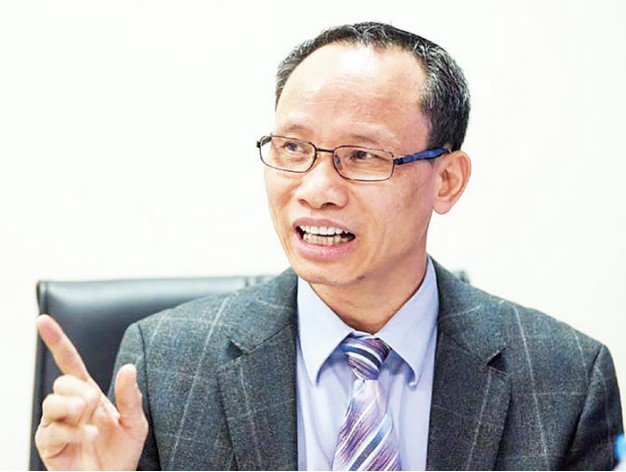Vietnam's economy accelerates, import-export reaches over 637 billion USD
Vietnam ended 2024 with GDP growth of 7.09%, marking a strong recovery signal in the context of a fluctuating global economy. This result is considered an important foundation for Vietnam's economy to break through in 2025, entering the acceleration and sustainable development phase.
According to data from the Customs Department - Ministry of Finance, as of September 15, 2025, the total import-export value of goods nationwide reached 637.21 billion USD, up 17.2% (equivalent to 93.7 billion USD) over the same period last year. In particular, the foreign-invested enterprise sector (FDI) continues to play a key role when it reached a total import-export turnover of 455.45 billion USD, a sharp increase of 23.5% (equivalent to an increase of 86.67 billion USD).
Exports reached 325.26 billion USD, up 15.8% (up 44.41 billion USD); while imports reached 311.95 billion USD, up 18.8% (up 49.29 billion USD) over the same period in 2024. Some import groups increased dramatically, typically computers, electronic products and components: increased by 28.78 billion USD (up 38.7%); machinery, equipment, tools and spare parts increased by 8.3 billion USD (up 24.9%).
In the FDI sector alone, the total import value reached 211.81 billion USD, up 26.4% (equivalent to 44.24 billion USD), accounting for nearly 68% of the total import turnover of the country.
Reviews show that, in the context of the global economy still facing many challenges such as prolonged inflation, geopolitical conflicts and supply chain fluctuations, Vietnam still maintains a positive import-export growth momentum, demonstrating strong economic recovery capacity after COVID-19 and flexible adaptation of businesses.
To maintain growth momentum and overcome current limitations, management agencies need to continue to promote diversification of export markets, reducing dependence on some traditional markets. At the same time, it is necessary to support businesses to improve their capacity to meet international technical standards, develop domestic supporting industries and invest in logistics infrastructure.
Applying digital transformation in import and export management is also an important solution to improve efficiency and transparency in international trade activities.
According to economic experts, despite many challenges, with the right policy orientation and efforts of the business community, Vietnam has every basis to expect a year 2025 with many outstanding achievements in the field of international trade.
Comparing statistics over the years shows that Vietnam's GDP in 2024 will reach more than 11.5 million billion VND (equivalent to 476.3 billion USD), ranking 4th in Southeast Asia and 34th in the world. Compared to 1990, our country's GDP has increased 274 times. If GDP in 2006 only exceeded 1 million billion VND, then by 2023 it will reach 10.32 million billion VND. This figure continues to grow strongly, demonstrating the resilience of the economy.
GDP per capita in 2024 will reach about 4,700 USD, an increase of 1.4 times compared to 2020. National income (GNI) per capita is expected to increase to 4,750 USD in 2025, surpassing the low average income threshold, opening up the prospect of soon joining the group of countries with high average incomes.
Vietnam can reach an income of 22,600 USD/person by 2045

Talking to Lao Dong Newspaper reporter, Dr. Can Van Luc - economic expert, member of the National Financial and Monetary Policy Advisory Council - commented that the figures published recently reflect the spectacular growth.
If the GDP per capita increases from 700 USD in 2006 to 5,000 USD in 2025, which is more than 7 times in less than two decades, it will be a very remarkable achievement - Dr. Can Van Luc commented and affirmed that this achievement not only reflects the economic resilience, but also demonstrates the correct direction of the Party, the strong management of the Government and the spirit of innovation of the business community.
However, Dr. Can Van Luc also believes that growth needs to be sustainable, inclusive, along with macroeconomic stability, controlling inflation below 5%, budget deficit below 4-4.5% and public debt below 60% of GDP in all situations.
Although we grow the economy, we cannot trade it for environmental pollution or macro-economic instability. To develop sustainably, it is necessary to ensure a reasonable structure between agriculture, industry, construction and services; both maintaining food security and improving quality and added value - Dr. Can Van Luc recommended.
According to the economic expert, if we maintain an average GDP growth rate of 9%/year for the period 2026-2030 and 8%/year for the period 2031-2045, by 2045, the average income per capita can reach 22,600 USD, helping Vietnam become a developed country with high income as set.
Dr. Le Dang Doanh - former Director of the Central Institute for Economic Management (CIEM) - emphasized the role of the private economic sector, when the whole country currently has 930,000 enterprises, 14,400 cooperatives and 5.2 million business households, contributing 46% of GDP and creating 85% of jobs (tables as of the end of 2024).

To meet development requirements, it is necessary to double the number of enterprises, while promoting the digital economy, green economy, and circular economy - Mr. Doanh proposed.
In the context of integration, countries setting up technical fences and strict standards to protect the domestic market is becoming increasingly popular. This is both an opportunity and a challenge that forces Vietnamese enterprises to improve their competitiveness.
In addition, climate change, epidemics and global geopolitical fluctuations continue to impact the supply chain. Vietnam needs to have an adaptive strategy, taking advantage of the market advantages of 100 million people, while strengthening institutional reform, simplifying procedures, and improving public governance capacity.
Despite many important economic achievements, there are challenges that require steadfastness in the goal of rapid and sustainable development. The path to the goal of 2045 to become a developed country with high income depends not only on growth rate, but more importantly, quality, efficiency and balance in all areas of the economy.












